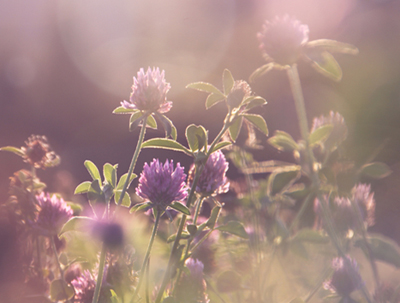Wilderness in your garden
A weed is just a wildflower with muscle, says Alan, as he outlines which he can tolerate, and which are uprooted as soon as possible


From my earliest student days, I have cherished the aphorism that ‘a weed is any plant growing where it's not wanted'-a dahlia can be a weed in a cabbage patch. And yet, to most folk, a weed is a wildflower with muscle: a plant that, given half a chance, will inflict grievous bodily harm on more delicate species that endeavour to survive in close proximity to it.
Few would argue that docks and nettles, ground elder and mare's tail, bindweed and dandelions are really weeds, but the seeds of even these brutes can probably be found in catalogues if you look hard enough, and at least one enterprising online garden centre offered some of them this year as pricey plants. Dandelion seeds-sold for raising salad leaves-can be obtained at £1.25 for 2,000. At that rate, I suppose it's hardly worth collecting your own. I find it difficult to work up enthusiasm for the dandelion, which studs my lawn with golden suns in April every year, but with young grandchildren now, I tell myself that I shall need a few dandelion clocks to allow them to check the time, and so, in odd corners of the garden, I leave a few to allow for the childhood recitation: (puff) ‘one o'clock', (puff) ‘two o'clock'...
When my own children were small, I remember my younger daughter rushing into the house in tears after I'd mown the lawn and chopped off the heads of her beloved daisies. It was some minutes before I could reassure her that they would be back within a few days to allow her to continue making daisy chains.

* Subscribe to Country Life; Country Life Digital Edition
And yet there are ‘weeds'-well, wildflowers really, let's be kind- that I admire and would be sorry to see the back of. Himalayan balsam may have an overly efficient seed-distribution system-catapulting them for several yards when ripe-but the succulent stems, the sweet scent of the flowers and their ability to attract bees means that I can't resist them. Ragwort, however, is assiduously hand-pulled from our wildflower meadow. I know that it's the food plant of the cinnabar moth and of more than 70 different species of insect, but the fact that it's poisonous to stock, that it spreads like wildfire if allowed to seed, and that it seems to have erupted all over the countryside this year, allows me to leave the responsibility for its survival to others. But cow parsley-now, that's a different story. I love its springtime froth in the hedgerows, making the first carefree burst of bloom after those early pioneers, the primroses and the cowslips-plants that nobody could ever call weeds.
Tall thistles most certainly are, but when the seedheads become food for charms of goldfinches (such a delightful collective noun), I stay my hand and wait until they've eaten their fill (by which time, the thistledown has probably travelled far and wide-a rod for my back, but a tolerable one). There are odd prejudices, of course. Gardeners love morning glories, despite their trickiness when it comes to cultivation. And yet we spurn the white-flowered perennial equivalent-convolvulus or bindweed-which has wonderful white trumpets and is dead easy to grow. To this pernicious weed, we give the common name ‘devil's guts' on account of its complex and tangled root system.
Whether you call them weeds or wildflowers, now is the best time to sow seeds to make a meadow or simply a native patch of flowers- the repeated freezing and thawing through the winter will trigger them into growth come spring. These are some I wouldn't be without: greater knapweed (as a nectar source for bees and butterflies); field scabious (another source of nectar); bird's-foot trefoil (egg-laying site for the common blue and clouded yellow); purple loosestrife (wonderful by a pond in late summer); thistle (for goldfinches); clover (beloved of bees); wild violet (food plant and nectar source for butterflies); stinging nettle (food plant for small tortoiseshell, red admiral and others); marguerite (insect food plant); and cow parsley (swarming with insects and a spring hedgerow stalwart).
Exquisite houses, the beauty of Nature, and how to get the most from your life, straight to your inbox.
* Buy plants in the Country Life Nursery
* Follow Country Life on Twitter
* Read our October gardening jobs
Country Life is unlike any other magazine: the only glossy weekly on the newsstand and the only magazine that has been guest-edited by His Majesty The King not once, but twice. It is a celebration of modern rural life and all its diverse joys and pleasures — that was first published in Queen Victoria's Diamond Jubilee year. Our eclectic mixture of witty and informative content — from the most up-to-date property news and commentary and a coveted glimpse inside some of the UK's best houses and gardens, to gardening, the arts and interior design, written by experts in their field — still cannot be found in print or online, anywhere else.
